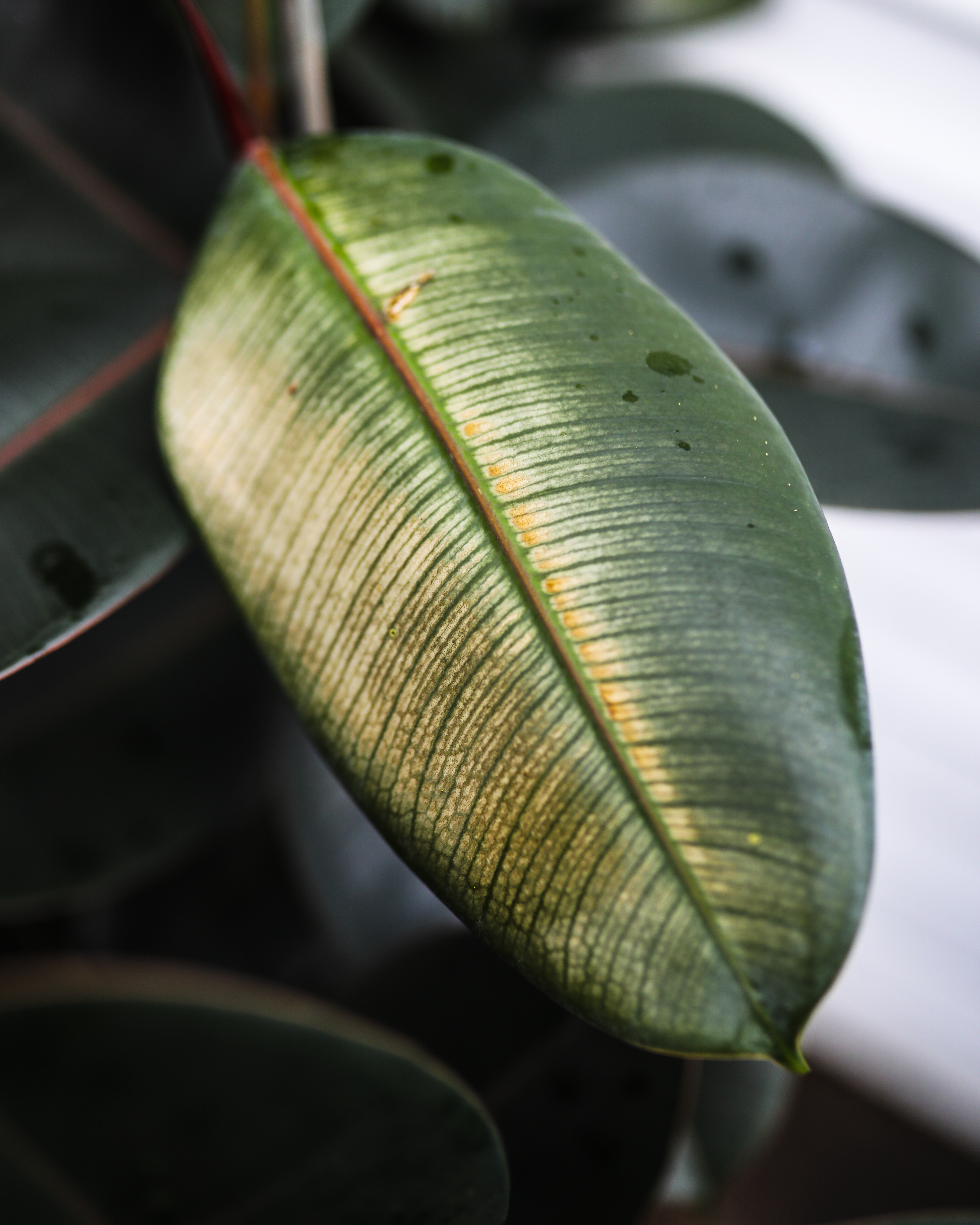Summer Vacation - Bringing Houseplants Outdoors
Just like us, plants can get sunburned! This is important to know when deciding to move plants outdoors in the spring and summer. While we do not suggest breaking out the Banana Boat, there are a few things you can do to prepare your plants for increased sunlight, both indoors and out!
Research
The first thing you can do before setting your plant into direct sunlight is to research what kind of light it can handle. When a plant is growing a new leaf, that leaf will develop with that particular type of light in mind. The leaf thickness, the size and number of stomata (leaf pores), color, and other characteristics will all be affected by the amount and intensity of light a plant is receiving. For this reason, abrupt changes in light intensity can cause a plant stress - you have probably seen this if you have ever moved a plant from a lower light area into direct sunlight, especially if that sunlight was unfiltered. Not all plants are suited for direct sunlight, even indoors behind the protection of glass. Many of our favorite houseplants naturally grow in tropical areas beneath tree canopies, protected from direct sunlight for the majority of their lives. Some plants like Monstera deliciosa can grow up large trees, eventually peeking over tree tops and into direct sun. Fiddle Leaf Figs are, in fact, large trees themselves, and can adapt to direct sunlight! Others like ferns prefer the dark, damp protection of the forest floor.
Many houseplants will appreciate some time outside in the summertime. The extra sunlight, increased humidity, and rain showers can encourage a growth spurt. That is, as long as the plants can handle the climate. Before moving your plants, check what the temperature range is where they can grow. High heat, low humidity, and intense sun are all things that can stunt plant growth or even kill certain plants. Even in the shade, tropical foliage may not be able to handle the ambient heat of a dessert. Once the nighttime temperatures are above 50°F, beyond the danger of frost, you can start bringing plants outdoors!
Baby Steps
After you have confirmed that your plant will be able to handle an outdoor vacation, you will have to take some time to allow your plant to acclimate to the new environment. For a plant that you are placing directly into deep shade or under a protected porch, it can be as easy as bringing your plant outside for a few hours at a time over the course of about a week, slowly building to the point where you can leave the plant outside for the whole day. Plants react to changes in temperature and humidity, and can even be taken by surprise by wind. By bringing them outdoors gradually, you are reducing the chance of sending your plant into shock.
If you are moving your plant from a bright spot indoors into direct sunlight outside, the process is a bit more drawn out. The difference between direct sunlight through a window and direct sunlight outdoors is vast - while direct sunlight indoors can be measured at about 5,000 footcandles, outdoors that same sun can be upwards of 10,000 footcandles. Your indoor plants cannot handle such intense light without acclimation; they will burn!
Acclimation
A plant that has primarily been indoors should be placed outside in a shady spot at first. A bit of early morning sunlight can be mild enough to not burn the leaves, and your plant may already be able to handle some dappled sunlight throughout the day. If your plant is one that you are going to be placing into full sun (8+ hours of bright, direct sunlight), gradually move the plant every day or two to a spot where it gets an hour or so more of direct sunlight. Find a place next to a tall fence or the side of your house that blocks the sun after a certain time of day, then inch the plant forward, expanding the timeframe of light exposure. When your plant is able to get through the afternoon without the leaves burning, you can place it in that full sun spot that you had in mind! This process can take anywhere from one to two weeks, depending on the plant and your climate. The best time to begin this acclimation process is in the spring once temperatures are staying above 50°F or so at night and before the sun intensifies in the summer.
What to expect
When moving your plants into direct sunlight, you can expect some sun damage to occur. Sunburn will show up in your plants leaves as dusty white or brown bleached spots. As long as the majority of your plant's leaves are still green, it should be able to recover. A good sign that your plant is going to be able to handle direct sunlight is when it produces new leaves. These new leaves will naturally be able to handle direct light, and are called sun leaves - they are thicker leaves that may even be a different color to protect themselves against the intense sun rays. Keep in mind that plants that are getting more sun will often need more water, so you will need to adjust your watering routine to accommodate. With more watering and growth comes a greater need for nutrients, so add fertilizing into your new routine as well!
Another thing to note about the final location of your plant is heat - cement, asphalt, and even wooden decks can hold a lot of heat. Placing a pot directly onto these materials can cause the roots of your plant to heat up dramatically. This can affect how much water your plant will need and can even lead to root damage. Additionally, the side of your house and other structures can radiate heat, which can damage the leaves and sensitive parts of a plant. Really take a step back and see the whole picture when choosing a vacation spot for your plants!
The benefit of bringing your light-loving indoor plants outside is that they can really experience a growth spurt. The additional air movement and rain showers can help them fight off pests and diseases that may easily take over indoors. Many indoor plants naturally grow to be quite large in tropical environments, and giving them access to the hot, humid summer air is like they are taking a vacation. Just make sure to bring them back indoors once temperatures start to fall again!
What is the most exciting thing you have seen a plant do after moving it outside? Sometimes plants can produce flowers or fruit that we didn't even know they were capable of! Let us know on our Facebook or Instagram pages!








